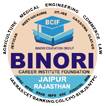Description
Apart from the Common Law Admission Test (CLAT), which is widely recognized for admissions to National Law Universities (NLUs), several institutions and universities across India conduct their own Other Law Entrance Tests (OLET). These tests are designed to select candidates for undergraduate and postgraduate law programs based on their aptitude, reasoning, and legal knowledge.
These entrance exams offer diverse opportunities for law aspirants to secure admission to reputable law schools beyond the ambit of CLAT.
Purpose of OLET for Law
The Other Law Entrance Tests (OLET) serves as a gateway for aspiring legal professionals to pursue education in prestigious universities and private institutions. They assess candidates’ readiness to excel in the field of law by evaluating their analytical, reasoning, and legal understanding skills.
Popular OLETs for Law
- AILET (All India Law Entrance Test):
- Conducted by the National Law University, Delhi.
- For admission to BA LLB (Hons), LLM, and PhD programs.
- SLAT (Symbiosis Law Admission Test):
- Conducted by Symbiosis International (Deemed University).
- For admission to law programs at Symbiosis Law School (SLS) campuses.
- LSAT India (Law School Admission Test):
- Conducted by the Law School Admission Council (LSAC).
- Accepted by over 20 law schools across India.
- MH CET Law (Maharashtra Common Entrance Test for Law):
- Conducted by the Maharashtra State CET Cell.
- For admission to 3-year and 5-year LLB programs in Maharashtra.
- BHU UET and PET:
- Conducted by Banaras Hindu University.
- For undergraduate (UET) and postgraduate (PET) law programs.
- Christ University Law Entrance Test:
- Conducted by Christ University, Bengaluru.
- For BA LLB and BBA LLB programs.
Eligibility Criteria
The eligibility requirements vary by institution and program. However, common criteria include:
- Educational Qualification:
- For undergraduate programs:
- Candidates must have passed Class 12 or equivalent with a minimum aggregate of 45%-50% (40%-45% for reserved categories).
- For postgraduate programs:
- A Bachelor’s Degree in Law (LLB) from a recognized institution with a minimum aggregate of 50%-55%.
- For undergraduate programs:
- Age Limit:
- No upper age limit for most exams (in line with the Bar Council of India guidelines).
- Nationality:
- Open to Indian citizens. Some institutions also accept NRI and foreign candidates.
Exam Pattern
While the exam pattern varies by test, most OLETs include:
- Mode: Online (computer-based) or offline (pen-and-paper).
- Type of Questions: Objective-type multiple-choice questions (MCQs).
- Duration: 1.5 to 2 hours.
- Sections:
- Legal Aptitude/Legal Reasoning
- Logical and Analytical Reasoning
- General Knowledge and Current Affairs
- English Language and Comprehension
- Quantitative Techniques (optional in some tests)
- Marking Scheme:
- Most tests award +1 for correct answers and do not have negative marking.
Other Law Entrance Tests (OLET) provides a variety of pathways for aspiring lawyers to join prestigious institutions across India. These exams cater to different academic and career goals, ensuring every candidate finds a suitable platform to launch their legal career.


Reviews
There are no reviews yet.